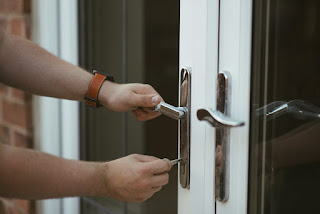The biggest question a lot of people have
when they come to our business about Bankruptcy is certainly 'Can I manage to
keep my house?' and in many cases the answer is yes, you can manage to keep
your house.
The only reason you can be compelled to
sell your family home if you declare bankruptcy is actually due to the fact
that you have a great deal of equity in the house that it is viewed as an
asset. Please check out these straightforward hypothetical case studies below
to get your head around Bankruptcy and how it impacts houses in Australia.
Remember If you need to know more regarding Bankruptcy and houses feel free to
get in touch with us here at Bankruptcy Experts Sydney on 1300 795 575, or
visit our website: www.bankruptcyexpertsSydney.com.au
Case Study 1. (Mike & Sue Smith).
5 years ago Mike and Sue bought a house in
a mining town for $450,000. At this time the mining boom was keeping all the
property prices nice and high. Now they are needing to look at Bankruptcy
because they have substantial debts of $80,000 on top of their mortgage and
credit card and tax debt.
They really wish to keep their house but
wonder if they can, they know that house prices if anything have gone down in
the area in the last 5 years so to be safe they think that their house is still
only worth $450,000 after all these years, to be sure they searched www.realestate.com.au/
sold section of the website to see what other houses in the streets nearby have
sold for lately.
Having said that they have not paid any
principal of the home loan over the last 5 years, mainly just interest, so they
still owe $450,000.
Current House Value = $450,000.
Current Mortgage Value = $450,000.
Net Equity Value = $0.
Because there is no equity in this property
the trustee will not ask Mike and Sue to sell their property when they go
bankrupt, as long as they keep up the mortgage payments then all will be well
for these people for the 3 years they are in bankruptcy.
At the end of the bankruptcy period the
trustee will write to them and ask if they wish to take over ownership of their
house again and as long as it has not grown in price over the 3 years they have
been bankrupt they will be asked to make an offer to have their house back.
This is typically somewhere between $3,000 and $5,000 to cover the legal costs
of altering the land title deed etc.
Now let's have a look at a slightly
different example of Bankruptcy and houses.
Case Study 2. (Bill & Michelle
Johnson).
2 years ago Bill and Michelle bought a
townhouse in a nice suburb of Sydney for $850,000 they tipped in $50,000 as a
deposit and now the townhouse two years later is worth $900,000.
Current House Value = $900,000.
Current Mortgage Value = $800,000.
Net Equity Value = $100,000.
As a result of a recent business failing
Bill is about $240,000 in debt. Michelle who does work in banking has a
separate job and no other debt other than the mortgage. Bill cannot pay his
debts therefore he is taking a look at Bankruptcy. Michelle is concerned that
she too may need to declare bankruptcy or be pushed into it because of the
house loan.
Within this particular case the trustee is
required to access or get their hands on Bill's half of the equity which is
$50,000 less selling costs. They may do this in a few ways; 1. Have them sell
the home. 2. Invite Michelle to buy Bills half of the equity. 3. leave them in
the home - but It's very unlikely in this case that the trustee would be happy
to leave Bill and Michelle in the house because there is just too much equity.
So Michelle may have the chance to purchase
Bill's share of the equity by coming up with $50,000 and buying out Bills' half
and from that moment its now 100 % Michelle's house.
Property and Bankruptcy in Australia is
confusing and demanding, these two case studies above are just the tip of the
iceberg as far as your options in Sydney are concerned. If you need to know
more about Bankruptcy and houses feel free to contact us here at Bankruptcy
Experts Sydney on 1300 795 575, or head to our website:
www.bankruptcyexpertsSydney.com.au.












